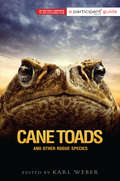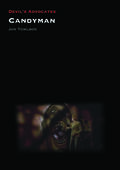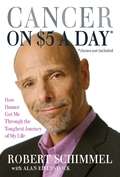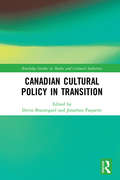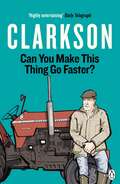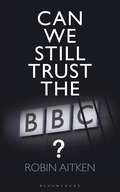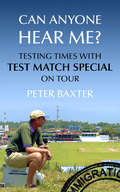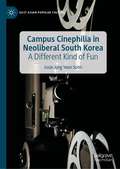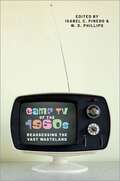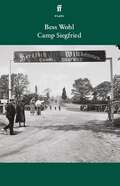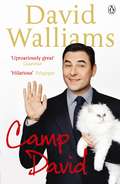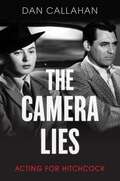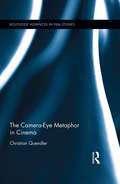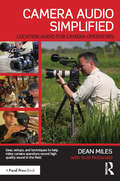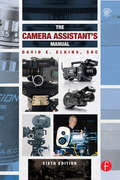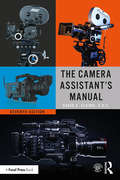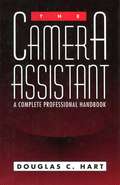- Table View
- List View
Cane Toads and Other Rogue Species: Participant Second Book Project
by Participant Productions edited by Karl WeberWhat does an unusually large, ugly, invasive species of toad have to do with global warming, international trade, and the survival of biodiversity? Quite a lot, actually. Mark Lewis's amazing and hilarious documentary Cane Toads tells the story of Bufo marinus, which was introduced to Australia in 1935 to control bugs but which quickly became a far greater menace than the beetles they eat. Today they number in the hundreds of millions and are taking over Australian habitats at 25 miles per year, spreading disease and killing native species as they go.Rogue Species explains the little-understood dangers of invasive species. Ranging from the zebra mussel (currently threatening the health of the Great Lakes) to the infamous kudzu vine (a Japanese import that now smothers seven million acres in the American southeast), these disastrous human blunders threaten the biodiversity on which all life-including our own-depends. The book will raise readers' awareness about the threat of non-native species, increase their appreciation of natural biodiversity, and explain what they can do to help protect unique ecosystems wherever they live or travel.
Candyman (Devil's Advocates)
by Jon TowlsonWhen Candyman was released in 1992, Roger Ebert gave it his thumbs up, remarking that the film was “scaring him with ideas and gore, rather than just gore.” Indeed, Candyman is almost unique in 1990s horror cinema in that it tackles its sociopolitical themes head on. As critic Kirsten Moana Thompson has remarked, Candyman is "the return of the repressed as national allegory": the film’s hook-handed killer of urban legend embodies a history of racism, miscegenation, lynching, and slavery, "the taboo secrets of America’s past and present."In this book, Jon Towlson considers how Candyman might be read both as a "return of the repressed" during the George H. W. Bush era, and as an example of nineties neoconservative horror. He traces the project’s development from its origins as a Clive Barker short story ("The Forbidden"); discusses the importance of its gritty real-life Cabrini-Green setting; and analyzes the film’s appropriation (and interrogation) of urban myth. The two official sequels (Candyman: Farewell to the Flesh [1995] and Candyman: Day of the Dead [1999]) are also considered, plus a number of other urban myth-inspired horror movies such as Bloody Mary (2006) and films in the Urban Legend franchise. The book features an in-depth interview with Candyman’s writer-director Bernard Rose.
Candyman (Devil's Advocates)
by Jon TowlsonWhen Candyman was released in 1992, Roger Ebert gave it his thumbs up, remarking that the film was “scaring him with ideas and gore, rather than just gore.” Indeed, Candyman is almost unique in 1990s horror cinema in that it tackles its sociopolitical themes head on. As critic Kirsten Moana Thompson has remarked, Candyman is "the return of the repressed as national allegory": the film’s hook-handed killer of urban legend embodies a history of racism, miscegenation, lynching, and slavery, "the taboo secrets of America’s past and present."In this book, Jon Towlson considers how Candyman might be read both as a "return of the repressed" during the George H. W. Bush era, and as an example of nineties neoconservative horror. He traces the project’s development from its origins as a Clive Barker short story ("The Forbidden"); discusses the importance of its gritty real-life Cabrini-Green setting; and analyzes the film’s appropriation (and interrogation) of urban myth. The two official sequels (Candyman: Farewell to the Flesh [1995] and Candyman: Day of the Dead [1999]) are also considered, plus a number of other urban myth-inspired horror movies such as Bloody Mary (2006) and films in the Urban Legend franchise. The book features an in-depth interview with Candyman’s writer-director Bernard Rose.
Cancer on Five Dollars a Day (chemo not included): How Humor Got Me Through the Toughest Journey of My Life
by Robert SchimmelIn the spring of 2000, stand-up comedian Robert Schimmel was diagnosed with stage III non-Hodgkin's lymphoma, and soon the fire of his white-hot career started to fizzle.But Schimmel never lost his sense of humor, his searing honesty, and most of all, his passion to make people laugh. Indeed, it was his basic need to entertain-even if the only people around him were suffering from cancer and the room he was playing was the Mayo Clinic infusion center-that carried him through his ordeal.Alternately laugh-out-loud funny and deeply moving, Cancer on 5 a Day is a stirring account of how one man's face-off with a deadly disease helped him better understand himself, and ultimately changed his life.
Canadian Cultural Policy in Transition (Routledge Studies in Media and Cultural Industries)
by Devin BeauregardThis book offers a comprehensive overview of Canadian cultural policy and research, at a time of transition and redefinition, to establish a dialogue between conventional and emerging foundations. Taking a historical view, the book informs insights on current trends in policy and explores global debates underpinning cultural policy studies within a local context. The book first acknowledges what Canadian cultural policy research conventionally recognizes and refers to in terms of institutions, values, and debates, before moving on to take stock of the transformations that are continuing to reshape Canadian cultural policy in terms of values, orientations, actors, and institutions. With a focus on all levels of government-- federal, provincial, and local -- the book also centers on Indigenous arts policies and practices. This systematic and inclusive volume will appeal to academic researchers, graduate students, managers of arts and culture programs and institutions, and in the areas of cultural policy, public administration, political science, cultural studies, film and media studies, theatre and performance, and museum studies.
Canadian Cultural Policy in Transition (Routledge Studies in Media and Cultural Industries)
by Devin Beauregard Jonathan PaquetteThis book offers a comprehensive overview of Canadian cultural policy and research, at a time of transition and redefinition, to establish a dialogue between conventional and emerging foundations. Taking a historical view, the book informs insights on current trends in policy and explores global debates underpinning cultural policy studies within a local context. The book first acknowledges what Canadian cultural policy research conventionally recognizes and refers to in terms of institutions, values, and debates, before moving on to take stock of the transformations that are continuing to reshape Canadian cultural policy in terms of values, orientations, actors, and institutions. With a focus on all levels of government-- federal, provincial, and local -- the book also centers on Indigenous arts policies and practices. This systematic and inclusive volume will appeal to academic researchers, graduate students, managers of arts and culture programs and institutions, and in the areas of cultural policy, public administration, political science, cultural studies, film and media studies, theatre and performance, and museum studies.
Can You Make This Thing Go Faster?
by Jeremy ClarksonThe hilarious new collection of stories and observations from Jeremy Clarkson - setting our off-kilter world to rights with thigh-slapping wit once againThese days, you might know him better as a tractor-driving Gentleman Farmer, but Jeremy Clarkson wasn't always a horny-handed son of the soil.Not at all . . .Back in the day Jeremy was far more likely to be found gunning around the world in a haze of burnt rubber and petrol fumes. But life as a globe-trotting petrol-head also meant he was forced endure more than his fair share of foolishness, frustration and downright bafflement. And, while Jeremy may not a patient man, you have to ask why anyone should have to consider issues as diverse and perplexing as:·The downsides of relaxing in a bath of crude oil·Why fishing is for people who hate their kids·Whether there are noise-cancelling headphones with the power to silence James May·Why saving the planet means soggy paper straws and no more children·What to do about the rambler who stole his marrowBut as puzzling and exasperating as life on the road often seemed to be, you could always count on Jeremy to set the world to rights with a rare wit and unique understanding. And at full throttle. Just don't expect it to all go smoothly . . .Praise for Clarkson:'Brilliant . . . laugh-out-loud' Daily Telegraph 'Outrageously funny . . . will have you in stitches' Time Out'Very funny . . . I cracked up laughing on the tube' Evening Standard
Can We Still Trust the BBC?
by Robin AitkenThe scandals that have rocked the BBC have touched the corporation from top to bottom. As the revelations about Jimmy Savile unfold and shock the nation, people may reasonably ask what possible trust they can have in this incomparable national institution, once the embodiment of truth and moral excellence.This book asks a big question: can we still trust the BBC? Drawing on his earlier book, Can We Trust the BBC?, Robin Aitken, a BBC reporter and executive for 25 years, argues that these most recent controversies are rooted in longstanding lapses and shortcomings in the BBC's doctrine of impartiality. In the wake of the Jimmy Savile scandal, he considers how 'public sector broadcasting' can survive now that public trust in the BBC has been jeopardized. This book blends analysis and sharp polemic to paint a vivid picture of life inside the news machine, as well as the Light Entertainment department, giving the reader unique insight into the context in which the scandals revealed in 2012 unfolded.Everything Robin Aitken prophesised in his original book has come true. His analysis at least is to be trusted.
Can Anyone Hear Me?: Testing Times With Test Match Special On Tour
by Peter BaxterFor 34 years from 1973 Peter Baxter was BBC producer of the hugely popular Test Match Special, and during that time he reported on Test matches from around the world. This funny and revealing book takes us behind the scenes as Baxter and his much-loved TMS colleagues do battle with local conditions and sometimes bizarre red tape to bring back home the latest news of England's progress (or otherwise) on the field. It should have been straightforward, but somehow it rarely was...
Campus Cinephilia in Neoliberal South Korea: A Different Kind of Fun (East Asian Popular Culture)
by Josie Jung SohnTaking a transnational approach to the study of film culture, this book draws on ethnographic fieldwork in a South Korean university film club to explore a cosmopolitan cinephile subculture that thrived in an ironic unevenness between the highly nationalistic mood of commercial film culture and the intense neoliberal milieu of the 2000s. As these time-poor students devoted themselves to the study of film that is unlikely to help them in the job market, they experienced what a student described as ‘a different kind of fun’, while they appreciated their voracious consumption of international art films as a very private matter at a time of unprecedented boom in the domestic film industry. This unexpectedly vibrant cosmopolitan subculture of student cinephiles in neoliberal South Korea makes the nation’s film culture more complex and interesting than a simple nationalistic affair.
Camp TV of the 1960s: Reassessing the Vast Wasteland
by Isabel C. Pinedo and W. D. PhillipsCamp TV of the 1960s offers a comprehensive understanding of all of the many forms camp TV took during that critical decade. In reevaluating the history of camp on television, the authors reconsider the infantilized conceptualization of sixties television, which has generally been characterized as the creative and cultural ebb between the 1950s Golden Age of television and the networks' shift to "relevance" in the early 1970s. Encompassing contributions from a broad range of media and television scholars that (re)consider programs like Batman, The Monkees, The Addams Family, Bewitched, F Troop, The Beverly Hillbillies, and Rowan & Martin's Laugh-In, chapters closely examine beloved 1960s American prime-time programs that drew significantly on aspects of camp, many of which were widely syndicated and left continuing imprints on popular culture. Other chapters consider key TV precursors from the early sixties; British camp television programs such as The Avengers; the use of musical codes to convey camp humor (even on black-and-white sets); the role that the viewing strategies of queer communities played - and continued to play even decades later; and how camp's multivalence allowed for more conservative readings, especially among older audiences, which were critical for the move to "mass camp" throughout American culture by the early seventies. Camp TV of the 1960s is essential reading for students and scholars in television studies and others interested in the history and theory of camp, the 1960s, or popular culture, as well as fans of these well-known but generally understudied television programs.
Camp TV of the 1960s: Reassessing the Vast Wasteland
Camp TV of the 1960s offers a comprehensive understanding of all of the many forms camp TV took during that critical decade. In reevaluating the history of camp on television, the authors reconsider the infantilized conceptualization of sixties television, which has generally been characterized as the creative and cultural ebb between the 1950s Golden Age of television and the networks' shift to "relevance" in the early 1970s. Encompassing contributions from a broad range of media and television scholars that (re)consider programs like Batman, The Monkees, The Addams Family, Bewitched, F Troop, The Beverly Hillbillies, and Rowan & Martin's Laugh-In, chapters closely examine beloved 1960s American prime-time programs that drew significantly on aspects of camp, many of which were widely syndicated and left continuing imprints on popular culture. Other chapters consider key TV precursors from the early sixties; British camp television programs such as The Avengers; the use of musical codes to convey camp humor (even on black-and-white sets); the role that the viewing strategies of queer communities played - and continued to play even decades later; and how camp's multivalence allowed for more conservative readings, especially among older audiences, which were critical for the move to "mass camp" throughout American culture by the early seventies. Camp TV of the 1960s is essential reading for students and scholars in television studies and others interested in the history and theory of camp, the 1960s, or popular culture, as well as fans of these well-known but generally understudied television programs.
Camp Siegfried
by Bess WohlI'm a killer I told youI told you that all alongYou were the dummy to believeI could ever be anything elseTwo teenagers fall in love on Long Island. There's fun and dancing, sports and team spirit, there's the woods and beer and physical hard work. But it's 1938, the world is on the brink of war, and their wholesome summer camp is exclusively for American youth of German descent. As their mutual attraction deepens, so they become intoxicated by the Nazi ideology that fuels the camp, an ideology that will culminate in global atrocity and genocide.Inspired by the real Camp Siegfried, Bess Wohl's play premiered at the Old Vic Theatre, London, in September 2021.
Camp David
by David WalliamsBritain's Got Talent is BACK . . . so it's time to get serious with Britain's favourite funny man.Famous comedian and actor, funniest judge on Britain's Got Talent, high-achieving sportsman and BESTSELLING AUTHOR of The World's Worst Children series, David Walliams is a man of many talents . . . Launched to fame with the record-breaking Little Britain, his characters - Lou, Florence, Emily, amongst others - became embedded in our shared popular culture. You couldn't enter a playground for a long while without hearing "eh, eh, eh" or "computer says no".And Walliams is a mystery. Often described as a bundle of contradictions, he is disarming and enigmatic, playing up his campness one minute and hinting about his depression the next.To read Camp David is to be truly shocked, as well as tickled pink: David Walliams bares his soul like never before and reveals a fascinating and complex mind. This searingly honest autobiography is a true roller-coaster ride of emotions, as this nation's sweetheart unlocks closely guarded secrets that until now have remained hidden in his past.'Will surprise, entertain, and allow fans and newcomers to enter the comic's uniquely brilliant world' GQ Magazine 'Raucously funny and superbly written' Heat 'Hilarious' Telegraph 'A great read. My only criticism is it ended too soon' The Sun 'A fascinating read' Star Magazine 'Brilliantly written' Express 'Fascinating stuff' Closer 'Uproariously great' Guardian
The Camera Lies: Acting for Hitchcock
by Dan CallahanThe first book on Hitchcock that focuses exclusively on his work with actors Alfred Hitchcock is said to have once remarked, "Actors are cattle," a line that has stuck in the public consciousness ever since. For Hitchcock, acting was a matter of contrast and counterpoint, valuing subtlety and understatement over flashiness. He felt that the camera was duplicitous, and directed actors to look and act conversely. In The Camera Lies, author Dan Callahan spotlights the many nuances of Hitchcock's direction throughout his career, from Cary Grant in Notorious (1946) to Janet Leigh in Psycho (1960). Delving further, he examines the ways that sex and sexuality are presented through Hitchcock's characters, reflecting the director's own complex relationship with sexuality. Detailing the fluidity of acting -- both what it means to act on film and how the process varies in each actor's career -- Callahan examines the spectrum of treatment and direction Hitchcock provided well- and lesser-known actors alike, including Ingrid Bergman, Henry Kendall, Joan Barry, Robert Walker, Jessica Tandy, Kim Novak, and Tippi Hedren. As Hitchcock believed, the best actor was one who could "do nothing well" - but behind an outward indifference to his players was a sophisticated acting theorist who often drew out great performances. The Camera Lies unpacks Hitchcock's legacy both as a director who continuously taught audiences to distrust appearance, and as a man with an uncanny insight into the human capacity for deceit and misinterpretation.
The Camera Lies: Acting for Hitchcock
by Dan CallahanThe first book on Hitchcock that focuses exclusively on his work with actors Alfred Hitchcock is said to have once remarked, "Actors are cattle," a line that has stuck in the public consciousness ever since. For Hitchcock, acting was a matter of contrast and counterpoint, valuing subtlety and understatement over flashiness. He felt that the camera was duplicitous, and directed actors to look and act conversely. In The Camera Lies, author Dan Callahan spotlights the many nuances of Hitchcock's direction throughout his career, from Cary Grant in Notorious (1946) to Janet Leigh in Psycho (1960). Delving further, he examines the ways that sex and sexuality are presented through Hitchcock's characters, reflecting the director's own complex relationship with sexuality. Detailing the fluidity of acting -- both what it means to act on film and how the process varies in each actor's career -- Callahan examines the spectrum of treatment and direction Hitchcock provided well- and lesser-known actors alike, including Ingrid Bergman, Henry Kendall, Joan Barry, Robert Walker, Jessica Tandy, Kim Novak, and Tippi Hedren. As Hitchcock believed, the best actor was one who could "do nothing well" - but behind an outward indifference to his players was a sophisticated acting theorist who often drew out great performances. The Camera Lies unpacks Hitchcock's legacy both as a director who continuously taught audiences to distrust appearance, and as a man with an uncanny insight into the human capacity for deceit and misinterpretation.
The Camera-Eye Metaphor in Cinema (Routledge Advances in Film Studies)
by Christian QuendlerThis book explores the cultural, intellectual, and artistic fascination with camera-eye metaphors in film culture of the twentieth century. By studying the very metaphor that cinema lives by, it provides a rich and insightful map of our understanding of cinema and film styles and shows how cinema shapes our understanding of the arts and media. As current new media technologies are attempting to shift the identity of cinema and moving imagery, it is hard to overstate the importance of this metaphor for our understanding of the modalities of vision. In what guises does the "camera eye" continue to survive in media that is called new?
The Camera-Eye Metaphor in Cinema (Routledge Advances in Film Studies)
by Christian QuendlerThis book explores the cultural, intellectual, and artistic fascination with camera-eye metaphors in film culture of the twentieth century. By studying the very metaphor that cinema lives by, it provides a rich and insightful map of our understanding of cinema and film styles and shows how cinema shapes our understanding of the arts and media. As current new media technologies are attempting to shift the identity of cinema and moving imagery, it is hard to overstate the importance of this metaphor for our understanding of the modalities of vision. In what guises does the "camera eye" continue to survive in media that is called new?
Camera Audio Simplified: Location Audio for Camera Operators
by Dean MilesYou’ve spent a lot of time learning how to use the features of your video camera to take amazing pictures, but chances are the audio always gives you trouble! Today, with production budgets shrinking, many are being asked to go-it-alone and sound is a frequent pain point that can drag production value down to an amateur level. To achieve great sound to go along with great video, you need to go beyond "automatic" mode and take control – know as much about microphones as you do about lenses with the help of Camera Audio Simplified. Author Dean Miles gives you the skills you need to capture quality location audio with your camera mic, wireless system, lavaliers, and handheld microphones. You’ll get step-by-step guidance to help elevate your sound from amateur to professional – and build your career and video production business.
Camera Audio Simplified: Location Audio for Camera Operators
by Dean MilesYou’ve spent a lot of time learning how to use the features of your video camera to take amazing pictures, but chances are the audio always gives you trouble! Today, with production budgets shrinking, many are being asked to go-it-alone and sound is a frequent pain point that can drag production value down to an amateur level. To achieve great sound to go along with great video, you need to go beyond "automatic" mode and take control – know as much about microphones as you do about lenses with the help of Camera Audio Simplified. Author Dean Miles gives you the skills you need to capture quality location audio with your camera mic, wireless system, lavaliers, and handheld microphones. You’ll get step-by-step guidance to help elevate your sound from amateur to professional – and build your career and video production business.
The Camera Assistant's Manual
by David E. Elkins, SOCExcel as an Assistant Cameraman (AC) in today’s evolving film industry with this updated classic. Learn what to do—and what NOT to do—during production and get the job done right the first time. The Camera Assistant’s Manual, Sixth Edition covers the basics of cinematography and provides you with the multi-skill set needed to maintain and transport a camera, troubleshoot common problems on location, prepare for job interviews, and work with the latest film and video technologies. Illustrations, checklists, and tables accompany each chapter and highlight the daily workflow of an AC. This new edition has been updated to include: A fresh chapter on the entry level camera positions of Camera Trainee/Production Assistant Coverage of emerging iPhone apps that are used by filmmakers and ACs on set An updated companion website offering online tutorials, clips, and techniques that ACs can easily access while on location (www.cameraassistantmanual.com) All new sample reports and forms including AC time cards, resumé templates, a digital camera report, and a non-prep disclaimer Instruction and custom forms to help freelance filmmakers keep track of daily expenses for tax purposes The Camera Assistant’s Manual, Sixth Edition is an AC's bible for success and a must-have for anyone looking to prosper in this highly technical and ever-changing profession.
The Camera Assistant's Manual
by David E. Elkins, SOCExcel as an Assistant Cameraman (AC) in today’s evolving film industry with this updated classic. Learn what to do—and what NOT to do—during production and get the job done right the first time. The Camera Assistant’s Manual, Sixth Edition covers the basics of cinematography and provides you with the multi-skill set needed to maintain and transport a camera, troubleshoot common problems on location, prepare for job interviews, and work with the latest film and video technologies. Illustrations, checklists, and tables accompany each chapter and highlight the daily workflow of an AC. This new edition has been updated to include: A fresh chapter on the entry level camera positions of Camera Trainee/Production Assistant Coverage of emerging iPhone apps that are used by filmmakers and ACs on set An updated companion website offering online tutorials, clips, and techniques that ACs can easily access while on location (www.cameraassistantmanual.com) All new sample reports and forms including AC time cards, resumé templates, a digital camera report, and a non-prep disclaimer Instruction and custom forms to help freelance filmmakers keep track of daily expenses for tax purposes The Camera Assistant’s Manual, Sixth Edition is an AC's bible for success and a must-have for anyone looking to prosper in this highly technical and ever-changing profession.
The Camera Assistant's Manual
by David E. Elkins, SOCExcel as a Cameraman in today’s evolving film industry with this updated classic. Learn what to do – and what NOT to do – during production and get the job done right the first time. This seventh edition covers the basics of cinematography and provides you with the multi-skill set needed to maintain and transport a camera, troubleshoot common problems on location, prepare for job interviews, and work with both film and digital technologies. Illustrations, checklists, and tables accompany each chapter and highlight the daily workflow of an Assistant Cameraman (AC), with expanded sections on problems and troubleshooting, updated formulas, tables, and checklists, as well as new information on the differences between working in the United States and UK and additional information on working with digital technology. This is a must-have for anyone looking to succeed in this highly technical and ever-changing profession. This book features a comprehensive companion web site that offers plenty of useful resources, including online tutorials that ACs can easily access while on location and supplementary downloadable forms and checklists.
The Camera Assistant's Manual
by David E. Elkins, SOCExcel as a Cameraman in today’s evolving film industry with this updated classic. Learn what to do – and what NOT to do – during production and get the job done right the first time. This seventh edition covers the basics of cinematography and provides you with the multi-skill set needed to maintain and transport a camera, troubleshoot common problems on location, prepare for job interviews, and work with both film and digital technologies. Illustrations, checklists, and tables accompany each chapter and highlight the daily workflow of an Assistant Cameraman (AC), with expanded sections on problems and troubleshooting, updated formulas, tables, and checklists, as well as new information on the differences between working in the United States and UK and additional information on working with digital technology. This is a must-have for anyone looking to succeed in this highly technical and ever-changing profession. This book features a comprehensive companion web site that offers plenty of useful resources, including online tutorials that ACs can easily access while on location and supplementary downloadable forms and checklists.
The Camera Assistant: A Complete Professional Handbook
by Douglas HartVeteran camera assistant Doug Hart describes in this comprehensive technical guide all of the important facets and duties of the first and second camera assistants' jobs. Whether it is feature films, episodic television, documentaries, commercials, or music videos, The Camera Assistant: A Complete Professional Handbook explains both the practice and theory behind it with a concentration on technique rather than equipment. In addition, personal anecdotes from the author's years behind and beside the camera provide insight into this demanding field. Key topics include film formats and aspect ratios, testing lenses and camera equipment, focus theory, film loading and labeling, scene blocking, marking actors, shooting tips, slating, paperwork, equipment maintenance, set etiquette, and finding work. This is not a camera equipment handbook; it is a comprehensive procedures manual which describes and explains the most important responsibilities of the camera assistant on the set, the theory behind the practice, and the methods that get the job done properly and keep the assistant frequently employed. Douglas C. Hart has been a freelance first-camera assistant on feature films, documentaries, television shows, and commercials for more than 20 years, including 10 years (and 10 films) as first-camera assistant to Gordon Willis, ASC, as well as work in 42 states and 26 foreign countries. His work includes Presumed Innocent, Hannah and Her Sisters, The Cosby Mysteries, and CBS's Central Park West. He is a member and former president of the International Photographers Local 644, IATSE, and teaches the Camera Assistant Workshops at the International Film and Television Workshops in Rockport, Maine.
